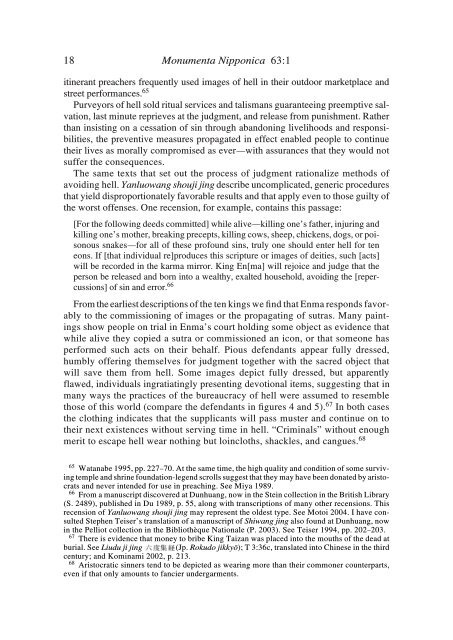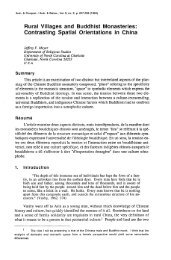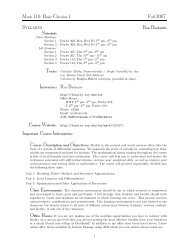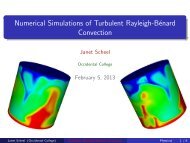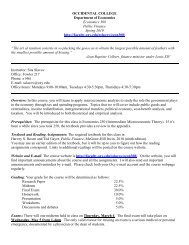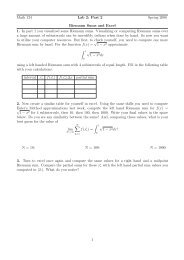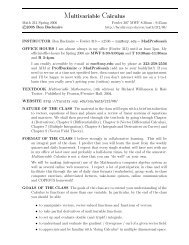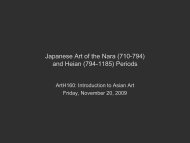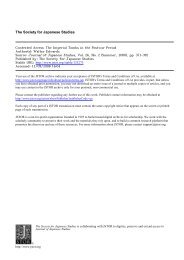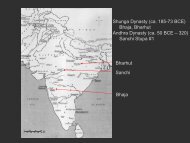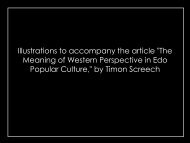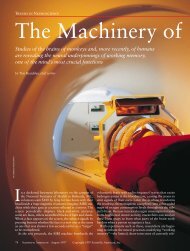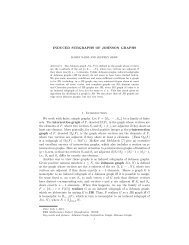A Primer on Japanese Hell Imagery and Imagination - Occidental ...
A Primer on Japanese Hell Imagery and Imagination - Occidental ...
A Primer on Japanese Hell Imagery and Imagination - Occidental ...
Create successful ePaper yourself
Turn your PDF publications into a flip-book with our unique Google optimized e-Paper software.
18<br />
M<strong>on</strong>umenta Nipp<strong>on</strong>ica 63:1<br />
itinerant preachers frequently used images of hell in their outdoor marketplace <strong>and</strong><br />
street performances. 65<br />
Purveyors of hell sold ritual services <strong>and</strong> talismans guaranteeing preemptive salvati<strong>on</strong>,<br />
last minute reprieves at the judgment, <strong>and</strong> release from punishment. Rather<br />
than insisting <strong>on</strong> a cessati<strong>on</strong> of sin through ab<strong>and</strong><strong>on</strong>ing livelihoods <strong>and</strong> resp<strong>on</strong>sibilities,<br />
the preventive measures propagated in effect enabled people to c<strong>on</strong>tinue<br />
their lives as morally compromised as ever—with assurances that they would not<br />
suffer the c<strong>on</strong>sequences.<br />
The same texts that set out the process of judgment rati<strong>on</strong>alize methods of<br />
avoiding hell. Yanluowang shouji jing describe uncomplicated, generic procedures<br />
that yield disproporti<strong>on</strong>ately favorable results <strong>and</strong> that apply even to those guilty of<br />
the worst offenses. One recensi<strong>on</strong>, for example, c<strong>on</strong>tains this passage:<br />
[For the following deeds committed] while alive—killing <strong>on</strong>e’s father, injuring <strong>and</strong><br />
killing <strong>on</strong>e’s mother, breaking precepts, killing cows, sheep, chickens, dogs, or pois<strong>on</strong>ous<br />
snakes—for all of these profound sins, truly <strong>on</strong>e should enter hell for ten<br />
e<strong>on</strong>s. If [that individual re]produces this scripture or images of deities, such [acts]<br />
will be recorded in the karma mirror. King En[ma] will rejoice <strong>and</strong> judge that the<br />
pers<strong>on</strong> be released <strong>and</strong> born into a wealthy, exalted household, avoiding the [repercussi<strong>on</strong>s]<br />
of sin <strong>and</strong> error. 66<br />
From the earliest descripti<strong>on</strong>s of the ten kings we find that Enma resp<strong>on</strong>ds favorably<br />
to the commissi<strong>on</strong>ing of images or the propagating of sutras. Many paintings<br />
show people <strong>on</strong> trial in Enma’s court holding some object as evidence that<br />
while alive they copied a sutra or commissi<strong>on</strong>ed an ic<strong>on</strong>, or that some<strong>on</strong>e has<br />
performed such acts <strong>on</strong> their behalf. Pious defendants appear fully dressed,<br />
humbly offering themselves for judgment together with the sacred object that<br />
will save them from hell. Some images depict fully dressed, but apparently<br />
flawed, individuals ingratiatingly presenting devoti<strong>on</strong>al items, suggesting that in<br />
many ways the practices of the bureaucracy of hell were assumed to resemble<br />
those of this world (compare the defendants in figures 4 <strong>and</strong> 5). 67 In both cases<br />
the clothing indicates that the supplicants will pass muster <strong>and</strong> c<strong>on</strong>tinue <strong>on</strong> to<br />
their next existences without serving time in hell. “Criminals” without enough<br />
merit to escape hell wear nothing but loincloths, shackles, <strong>and</strong> cangues. 68<br />
65 Watanabe 1995, pp. 227–70. At the same time, the high quality <strong>and</strong> c<strong>on</strong>diti<strong>on</strong> of some surviving<br />
temple <strong>and</strong> shrine foundati<strong>on</strong>-legend scrolls suggest that they may have been d<strong>on</strong>ated by aristocrats<br />
<strong>and</strong> never intended for use in preaching. See Miya 1989.<br />
66 From a manuscript discovered at Dunhuang, now in the Stein collecti<strong>on</strong> in the British Library<br />
(S. 2489), published in Du 1989, p. 55, al<strong>on</strong>g with transcripti<strong>on</strong>s of many other recensi<strong>on</strong>s. This<br />
recensi<strong>on</strong> of Yanluowang shouji jing may represent the oldest type. See Motoi 2004. I have c<strong>on</strong>sulted<br />
Stephen Teiser’s translati<strong>on</strong> of a manuscript of Shiwang jing also found at Dunhuang, now<br />
in the Pelliot collecti<strong>on</strong> in the Bibliothèque Nati<strong>on</strong>ale (P. 2003). See Teiser 1994, pp. 202–203.<br />
67 There is evidence that m<strong>on</strong>ey to bribe King Taizan was placed into the mouths of the dead at<br />
burial. See Liudu ji jing (Jp. Rokudo jikkyô); T 3:36c, translated into Chinese in the third<br />
century; <strong>and</strong> Kominami 2002, p. 213.<br />
68 Aristocratic sinners tend to be depicted as wearing more than their comm<strong>on</strong>er counterparts,<br />
even if that <strong>on</strong>ly amounts to fancier undergarments.


